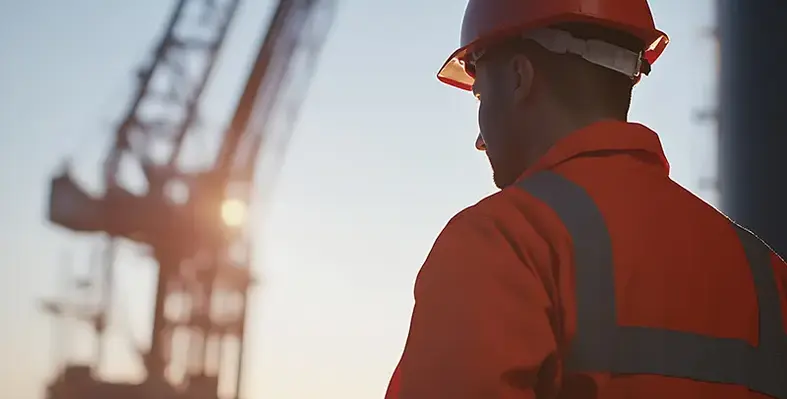
 Odfjell Technology (UK) Ltd has announced a two-year extension of its Master Service Agreement with Serica Energy (UK) Limited.
Odfjell Technology (UK) Ltd has announced a two-year extension of its Master Service Agreement with Serica Energy (UK) Limited.
The renewed agreement underscores the companies’ strong partnership and Odfjell Technology’s ongoing commitment to delivering reliable, high-quality campaign support and maintenance services within the energy industry.
Originally awarded in November 2018, the Serica contract covers the provision of storage, preservation, maintenance, and drilling services. It has since been sustained through several rolling extensions. Under this agreement, Odfjell Technology supplies skilled personnel to support intervention and maintenance operations on the Bruce platform, along with engineering expertise through targeted surveys that contribute to Life of Field activities. The latest extension secures an additional two years of backlog for Odfjell Technology, reinforcing its continued support for Serica’s operational objectives.
John Moffat, Senior Vice President of Operations & P&A UK, commented, “This extension reflects the trust Serica places in Odfjell Technology and the value our teams deliver across intervention, maintenance, and drilling support. We are proud to continue this long-standing partnership and strengthen our position for future campaign readiness, reinforcing our commitment to reliable, flexible service delivery.”
With more than 50 years of experience, Odfjell Technology is an integrated provider of offshore operations, well services technology, and engineering solutions. The company is dedicated to improving safety, efficiency, and sustainability across all operations while reducing time, cost, and emissions for clients. Operating in over 30 countries, Odfjell Technology employs more than 2,400 skilled professionals worldwide.
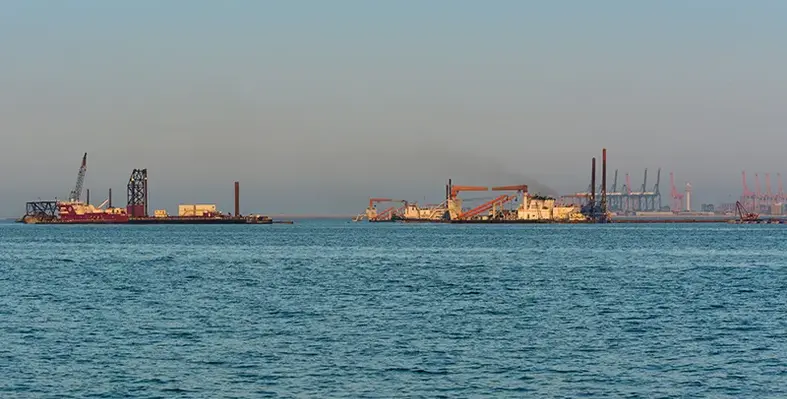
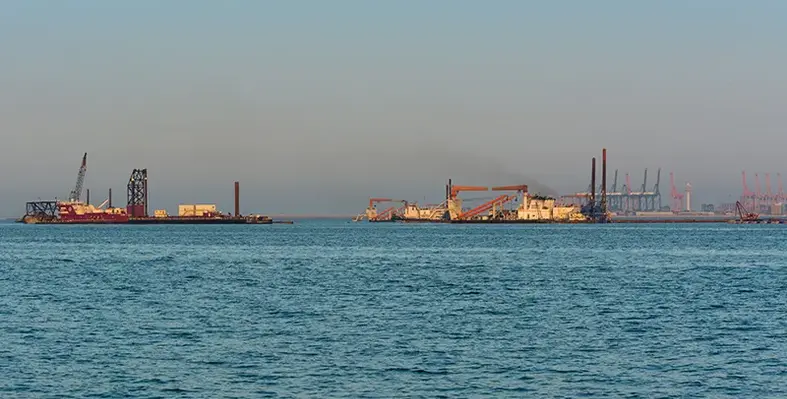 The Norwegian-based offshore and subsea services provider DOF Group ASA has announced contract extensions for three high-specification pipelay support vessels (PLSVs) owned via its joint venture with TechnipFMC (50:50).
The Norwegian-based offshore and subsea services provider DOF Group ASA has announced contract extensions for three high-specification pipelay support vessels (PLSVs) owned via its joint venture with TechnipFMC (50:50).
The vessels are engaged by Petrobras in Brazil and are now set to bolster the company’s offshore presence well into the next decade.
The PLSVs Skandi Vitória and Skandi Niterói have had their existing contracts, originally due to end in Q4 2025, extended through to Q1 2027. Their subsequent three-year contracts, announced in June 2024, will commence once the extended period concludes. Meanwhile, Skandi Açu has seen its current charter, set to finish in Q3 2026, likewise extended to Q1 2027, ahead of a separate three-year deal announced in August 2024.
DOF says these amendments add approximately US$100mn to the company’s firm backlog, while all other terms of the previously disclosed three-year agreements remain unchanged. “We are happy to extend the firm backlog of these three high-end vessels into 2030,” said Mons Aase, CEO of DOF Group ASA. “Together with other contracts previously announced, DOF now has 17 vessels in Brazil with firm backlog extending towards and into the next decade.”
The announcement underscores the firm’s commitment to its offshore services footprint in Brazil, securing long-term engagements for its pipelay assets in a key global market.

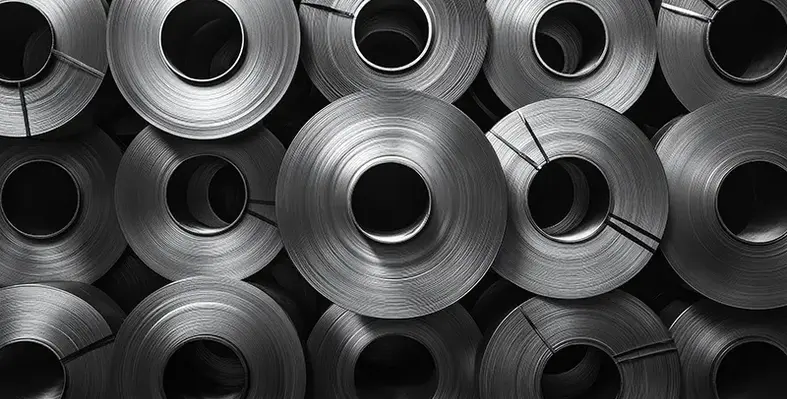 Energy technology company, Baker Hughes, has entered a deal with Aramco to expand its integrated underbalanced coiled tubing drilling (UBCTD) operations across Saudi Arabia’s natural gas fields.
Energy technology company, Baker Hughes, has entered a deal with Aramco to expand its integrated underbalanced coiled tubing drilling (UBCTD) operations across Saudi Arabia’s natural gas fields.
The multi-year agreement secures scope for current UBCTD fleet expansion from four to 10 units for re-entry and greenfield drilling projects across fields in the Kingdom. The integrated solutions will cover every aspect of the UBCTD operations, including coiled tubing drilling units, underbalanced drilling services, operational management, well construction, and geosciences to scale and accelerate their access to gas from new and established fields.
“This project is the result of nearly two decades of successful collaboration between Baker Hughes and Aramco, which have set the standard for UBCTD,” said Amerino Gatti, executive vice president of Oilfield Services & Equipment at Baker Hughes. “By combining advanced technologies with a holistic, integrated approach, we can support Aramco to more efficiently access bypassed and hard-to-reach hydrocarbons and produce the resources that help the Kingdom thrive. This expansion sets the stage for further innovation in UBCTD, which has the potential to shape how oil and gas are produced around the world.”
The integrated approach to UBCTD includes CoilTrak bottomhole assembly (BHA) system and enhanced reservoir analysis driven by GaffneyCline energy advisory. The combined effect of these technologies and insights result in smooth navigation of the subsurface environment during horizontal drilling and re-entry operations. These, backed by holistic project management services, will lead to enhanced production efficiency, speed and safety while mitigating reservoir damage when compared to traditional development methods.
Work under the expanded agreement is scheduled to commence in 2026.
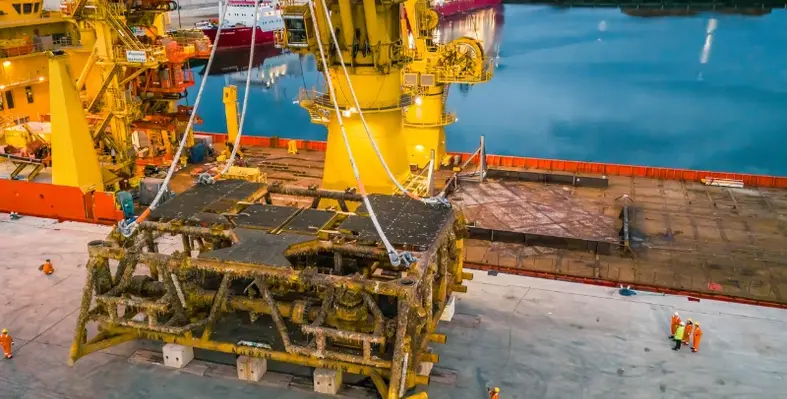
 Service provider DeepOcean will support the decommissioning of subsea infrastructure at Western Australian oil and gas fields.
Service provider DeepOcean will support the decommissioning of subsea infrastructure at Western Australian oil and gas fields.
The scope of work includes suspension of subsea trees, removal of flowlines, riser and dynamic umbilical, and removal of a disconnectable turret mooring buoy (DTM). The work is scheduled to begin next year and will be performed form one of the company’s regional vessels.
The fields are located off the coast of Western Australia in depths of 300-400 metres.
Colin McGinnis, Managing Director of DeepOcean’s Asia Pacific operations, said, “We are honoured that DeepOcean has been entrusted with the delivery of this significant project. It builds on our extensive regional and international experience in decommissioning and reinforces our long-term commitment to supporting the energy sector in Australia.
“DeepOcean is already one of the market leaders within subsea decommissioning in the mature North Sea region. This project demonstrates that we are already managing to combine local Shelf Subsea expertise with our North Sea decommissioning competence. The end-beneficiary is our clients in the region.”
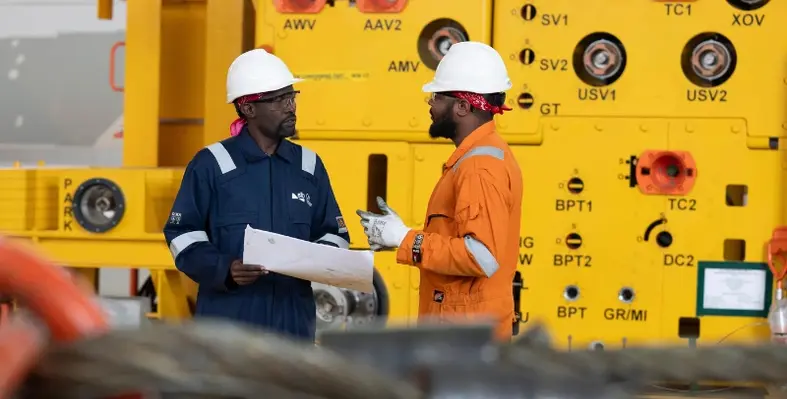
 Two engineering, procurement and construction (EPC) contracts have been awarded by PTT Exploration and Production Public Company Ltd. (PTTEP) to SLB’s OneSubsea joint venture for work in Malaysian offshore fields.
Two engineering, procurement and construction (EPC) contracts have been awarded by PTT Exploration and Production Public Company Ltd. (PTTEP) to SLB’s OneSubsea joint venture for work in Malaysian offshore fields.
The contracts build on a 20-year collaboration between the two companies. As part of the EPC contracts, OneSubsea will deliver comprehensive subsea production systems for the Alum, Bemban and Permai deepwater gas fields located in Block H and the Kikeh field – Malaysia’s first deepwater oil project.
The scope of work includes horizontal subsea trees, umbilicals, control systems, and associated services.
Mads Hjelmeland, Chief Executive Officer at SLB OneSubsea, said, “We are proud to continue our long-standing relationship with PTTEP, which has seen the delivery of more than 50 systems over the past 20 years. By leveraging our experience in complex deepwater environments and adopting a highly collaborative, early engagement process with our clients, we will help PTTEP unlock maximum value from these projects.”
The Block H gas development began producing natural gas from the Rotan and Buluh fields in 2021, while the Kikeh oil and gas field has been in production since 2007. SLB OneSubsea’s experience of deploying technology in complex deepwater environments will further extend the life of these two fields.

 Oceaneering International, Inc. has announced that its Offshore Projects Group (OPG) has received a contract from bp Exploration (Caspian Sea) Ltd. to provide riserless light well intervention (RLWI) services at the Azeri-Chirag-Deepwater Gunashli (ACG) oilfield in the Caspian Sea
Oceaneering International, Inc. has announced that its Offshore Projects Group (OPG) has received a contract from bp Exploration (Caspian Sea) Ltd. to provide riserless light well intervention (RLWI) services at the Azeri-Chirag-Deepwater Gunashli (ACG) oilfield in the Caspian Sea
As part of the agreement, Oceaneering will deliver RLWI services for a multi-well mechanical wireline intervention campaign using one of its deepwater systems, which will be integrated onto a subsea construction vessel provided by the client. The project scope also includes management, engineering, and systems integration services to be carried out by both local and international Oceaneering teams.
Engineering and pre-mobilisation activities are already underway, with field operations expected to begin in the fourth quarter of 2025.
Chris Dyer, Senior Vice President of OPG, said, “Oceaneering has successfully provided RLWI solutions to help restore and improve production from existing wells in other deepwater regions of the world. We appreciate bp’s continued trust in our ability to safely provide reliable and cost-effective deepwater intervention solutions, particularly in support of the critical production in the Deepwater Gunashli area of the ACG field.”
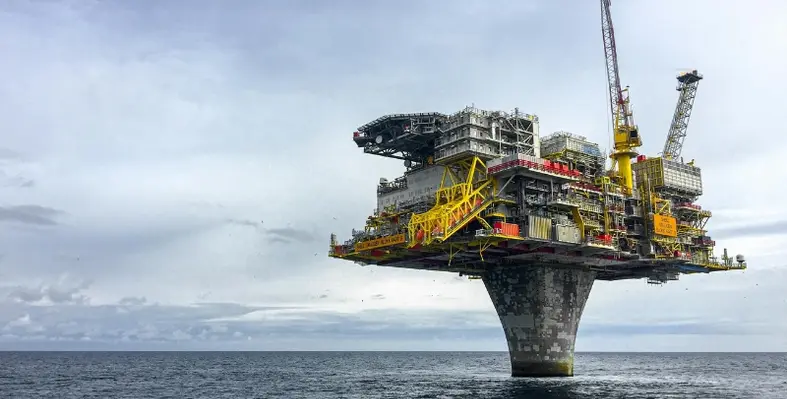

Halliburton has introduced the StreamStar wired drill pipe interface system, a pioneering solution that provides real-time, high-speed data and continuous downhole power.
Designed to improve orchestrated closed-loop automation, the system enables faster and more accurate decision-making.
By reducing reliance on downhole generators and lithium batteries, StreamStar allows a compact bottomhole assembly that positions sensors closer to the bit for enhanced measurement reliability.
It also enables instant, two-way communication between the logging-while-drilling system and rotary steerable system, cutting well construction time.
The StreamStar system is part of Halliburton’s iStar intelligent drilling and logging platform, integrating seamlessly with the LOGIX automation and remote operations suite.
This combination allows instant execution of commands, closed-loop control, and real-time optimisation of drilling operations.
As the industry moves toward smarter, automated drilling, StreamStar delivers enhanced precision, operational efficiency, and confidence at every stage of well construction.
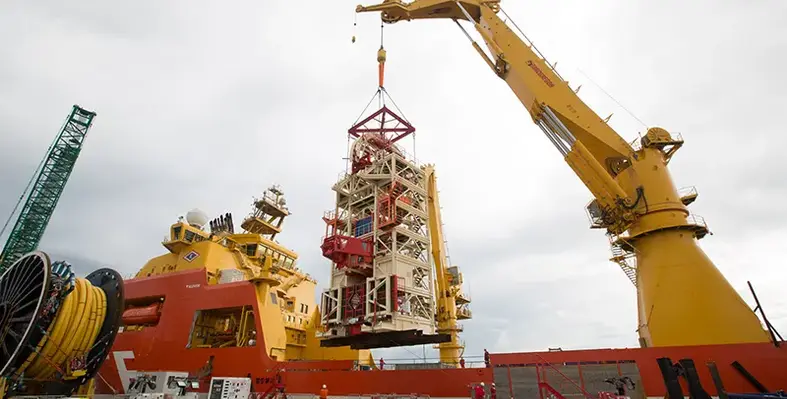
 Maritime Developments Ltd (MDL) has secured a significant subsea installation contract in the Asia-Pacific region, involving the laying of two subsea cables and two umbilicals.
Maritime Developments Ltd (MDL) has secured a significant subsea installation contract in the Asia-Pacific region, involving the laying of two subsea cables and two umbilicals.
The project, which will take place at water depths of between 800 and 1,200 metres, reinforces MDL’s growing footprint across the region.
The 60-day offshore campaign is scheduled to mobilise from Singapore in 2026, with MDL providing a complete flex-lay spread for the operation. This will include one of the company’s renowned Horizontal Lay Systems (HLS) - a compact, integrated package that has delivered proven results on both installation and decommissioning projects worldwide. The spread will also feature MDL’s high-capacity four-track tensioner and its flagship Reel Drive System (RDS), ensuring precision and reliability throughout the installation.
As part of its long-term strategy to support clients in the Asia-Pacific market, MDL recently opened a new regional office in Singapore. The hub will serve as a base for operations, project delivery, and client engagement across the Eastern Hemisphere.
The Singapore office is led by Bernice Tan, MDL’s Regional Manager for APAC, who brings more than 15 years of experience in the Asian energy sector, covering business development, commercial management, and supply chain operations.
“With years of experience promoting flex-lay equipment and services in the region, I’m thrilled to join MDL - a company that truly shares my values,” said Tan. “This expansion marks an important step in strengthening MDL’s ability to support clients globally. With our equipment now based in Singapore, we can deliver faster, more efficient, and localised service across Asia-Pacific.”
Tan added that her priority will be to work closely with long-standing and new clients as MDL continues to deliver world-class subsea engineering solutions to one of the world’s most dynamic offshore markets.
This contract highlights MDL’s commitment to providing innovative, cost-effective subsea solutions and underlines its ambition to be a leading provider of offshore installation services throughout the Asia-Pacific region.
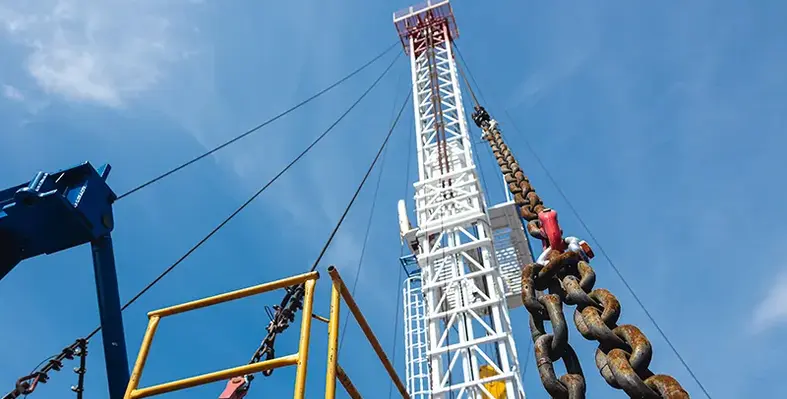
 Petronas, through Malaysia Petroleum Management (MPM), has launched the Hydraulic Workover Unit (HWU) Academy to develop Malaysian talent and strengthen national capabilities in well abandonment and decommissioning.
Petronas, through Malaysia Petroleum Management (MPM), has launched the Hydraulic Workover Unit (HWU) Academy to develop Malaysian talent and strengthen national capabilities in well abandonment and decommissioning.
“The HWU Academy’s programmes are designed to equip Malaysians with the technical expertise needed to lead in emerging opportunities, complementing the national Technical and Vocational Education and Training (TVET) agenda for hands-on, industry-relevant training,” said Datuk Ir. Bacho Pilong, Senior Vice President of MPM.
Petronas noted in a statement that thenew academy underscores its commitment to ensure “the continuous development of skilled talent to support safe, cost-efficient and sustainable Plug and Abandonment (P&A) operations, a vital component of Malaysia’s upstream lifecycle.”
Building on a 2024 Memorandum of Understanding (MoU) between MPM and industry partners, the HWU Academy has progressed from concept to implementation, including two successful pilot training sessions to validate the programme framework.
Serving as a centre of excellence, it will provide hands-on training using retired assets such as the Velesto HWU Gait-01 training unit.
Learners will also benefit from technology-driven modules developed with Halliburton, featuring virtual reality simulators and digital learning tools to enhance technical proficiency and operational readiness.
In addition, the academy will strengthen academic–industry collaboration through strategic partnerships with leading universities such as Universiti Malaysia Sabah (UMS), Kolej Kemahiran Tinggi MARA (KKTM), Universiti Teknologi Malaysia (UTM), Universiti Teknologi PETRONAS (UTP) and Universiti Teknologi MARA (UiTM).
This will also include collaboration with key ministries such as the Ministry of Human Resources (KESUMA) and the Ministry of Higher Education (KPT), and the Malaysian Oil and Gas Services Council (MOGSC).
These collaborations aim to facilitate student enrolment, programme accreditation and grant accessibility, whilst attracting both local and international talent.
“This initiative aligns with Petronas’ aspiration to strengthen the local oil and gas ecosystem, empowering Malaysians to play a leading role in shaping the future of our industry,” said Pilong.
“Velesto Energy Academy and ZNUSS will be the first to embark on this exciting training journey. This partnership reinforces our collective commitment to continuity, consistency and standardisation in developing Malaysia’s HWU capability through the HWU Academy framework.”
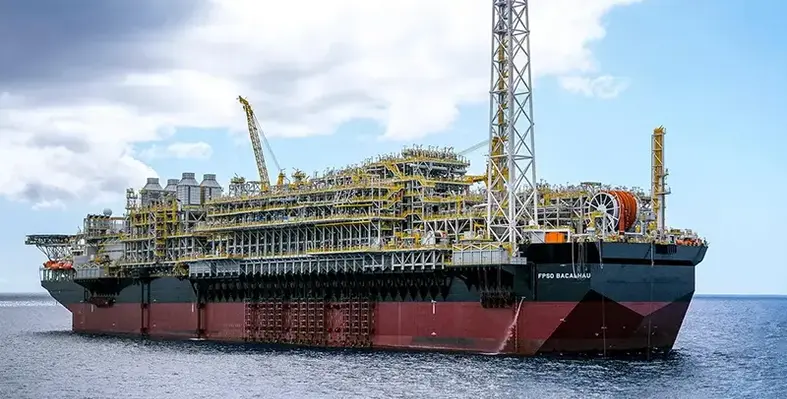
 The Bacalhau field in Brazil has seen start-up of production as its operator, Equinor, along with partners ExxonMobil Brasil, Petrogal Brasil (JV Galp|Sinopec) and Pré-sal Petróleo SA (PPSA), achieved exceptional engineering feat.
The Bacalhau field in Brazil has seen start-up of production as its operator, Equinor, along with partners ExxonMobil Brasil, Petrogal Brasil (JV Galp|Sinopec) and Pré-sal Petróleo SA (PPSA), achieved exceptional engineering feat.
“Around 70 million hours of work have been recorded in the project with solid safety results. I would like to sincerely thank our partners, suppliers, and employees for making this achievement a reality. With its size, water depth and lower carbon intensity, Bacalhau is a testament to our engineering capabilities and ability to operate internationally,” said Geir Tungesvik, Executive Vice President, Projects, Drilling and Procurement.
With recoverable reserves surpassing 1 billion barrels of oil equivalent (boe), Bacalhau is the largest international offshore field ever developed by Equinor.
"The safe start-up of Bacalhau marks a major milestone for Equinor. Bacalhau represents a new generation of projects that bring together scale, cost-efficiency and lower carbon intensity. With this development, we are strengthening the longevity of our oil and gas production and securing value creation for decades to come,” says Anders Opedal, President and CEO of Equinor.
Bacalhau is located in the pre-salt region of Brazil's Santos Basin in ultra-deep water exceeding 2,000 metres. The field features one of the most modern floating production storage and offloading vessels (FPSO) in the world, measuring 370 metres in length and 64 metres in width, with a production capacity of 220,000 barrels of oil per day (bpd).
About 19 wells, producers and injectors are set to be brought online in sequence as part of the Phase 1 development of the project ahead of ramp up and production sustenance work.
The Bacalhau FPSO is equipped with advanced carbon-reduction technology in the form of combined-cycle gas turbines (CCGT). With an expected CO₂ intensity of around 9 kg per boe, and advanced abatement across flaring, processing, power generation, and storage, the field sets a new benchmark for cost efficient and lower emission deepwater production.
“Brazil is a core area for us and Bacalhau will be a major contributorto Equinor’s goal of generating more than 5 billion dollars of free cashflow by 2030 from our international portfolio. Bacalhau will also deliver positive ripple effects and long-term benefits to Brazil´s economy, creating approximately 50,000 jobs over its 30-year lifetime,” said Philippe Mathieu, Executive Vice President for Exploration and Production International.
MODEC, the FPSO contractor, will operate the unit for the initial phase. Thereafter, Equinor plans to operate the Bacalhau facilities until end of the license period.
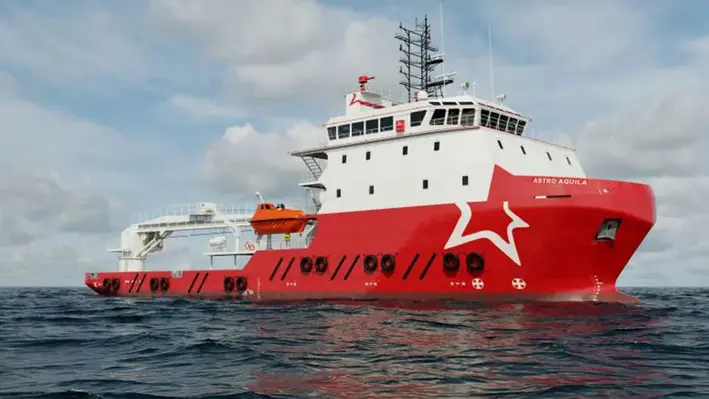
 Dubai-based offshore vessel operator Astro Offshore, part of the Adani Group, has reached a major milestone by adding its 50th vessel to the fleet.
Dubai-based offshore vessel operator Astro Offshore, part of the Adani Group, has reached a major milestone by adding its 50th vessel to the fleet.
The company has welcomed the Astro Achernar, an advanced 88-metre DP2 diesel-electric multipurpose support vessel (MPSV), designed to enhance its offshore support and subsea operations.
The newly acquired Astro Achernar comes equipped with accommodation for 222 personnel and a 100-tonne active heave-compensated (AHC) crane, boosting the firm’s capabilities across complex offshore projects.
“This milestone represents more than just a number, it’s a reflection of the trust our clients place in us and the dedication of our team across every level of the organisation,” said Mark Humphreys, CEO of Astro Offshore. “With the addition of Astro Achernar, we continue to strengthen our fleet, expand our capabilities, and position Astro as a trusted partner in delivering safe, efficient, and versatile offshore support.”
The expansion reflects a period of exceptional growth for Astro Offshore, which has doubled its fleet from 25 to 50 vessels in just 12 months. Over the past six weeks alone, the company has added seven new vessels, with the Astro Achernar marking the eighth in this rapid phase of development.
This strategic growth highlights Astro Offshore’s commitment to delivering high-performance solutions and maintaining its reputation as one of the region’s most reliable offshore support providers. With a focus on safety, innovation, and operational excellence, the company continues to strengthen its position in the global offshore market.

 As part of Trion project's subsea infrastructure development, Woodside Energy has employed Tenaris for casing and tubing services, alongside line pipe and coatings for bends, flowlines and risers.
As part of Trion project's subsea infrastructure development, Woodside Energy has employed Tenaris for casing and tubing services, alongside line pipe and coatings for bends, flowlines and risers.
Located in the Perdido Fold Belt, approximately 180 kilometers off the Mexican coastline, Trion is a highly anticipated deepwater project from Mexico that is set to generate first oil in 2028, with a nameplate production capacity of 100,000 barrels per day. A greenfield project at a water depth of 2,500 meters, Trion is being developed by Woodside-affiliate, Woodside Petroleo Operaciones de México, S. de R.L. de C.V. (Operator, 60%) and Pemex (40%).
Following its Rig Direct service model, Tenaris will supply 12,000 tons of casing and tubing, including 1,600 tons in the Super 13 Chrome steel grade. For the line pipe portion, the company will deliver approximately 16,000 tons of pipe for flowlines and risers, including the application of TenarisShawcor Marine 5-Layer Syntactic and Solid Polypropylene for flow assurance, and TenarisShawcor Fusion Bonded Epoxy, Three-Layer Polypropylene, and Liquid Epoxy coatings for corrosion protection. Line pipe and coatings will be supplied along with One Line project solutions.
“Trion represents a historic milestone for Mexico’s energy future, and we are proud to be part of it,” said Pablo Gómez, Tenaris Commercial Vice-President in Mexico. “This project underscores the strength of our customer partnerships and our ability to deliver advanced technological solutions for the most demanding offshore environments.”
Page 5 of 109